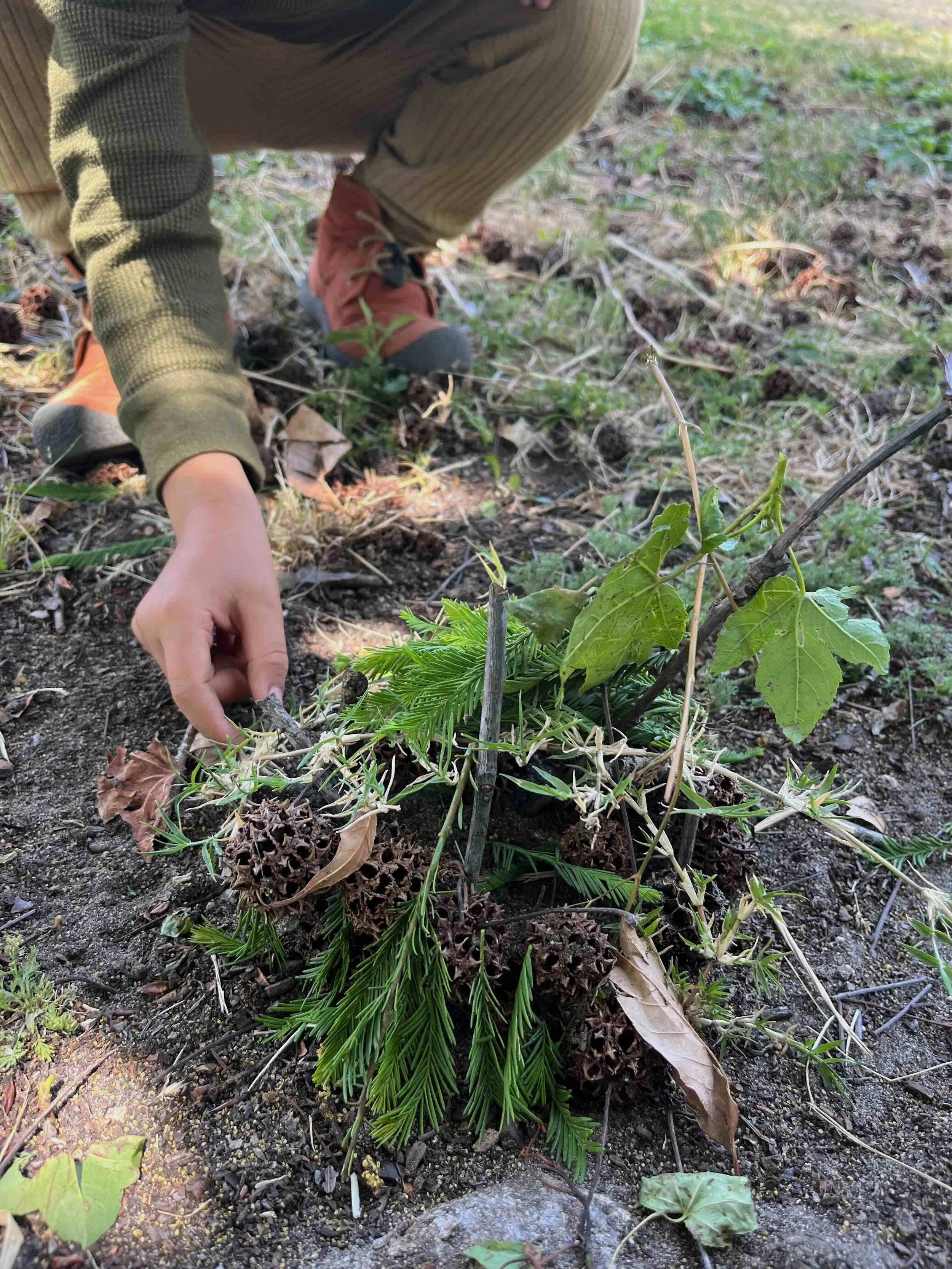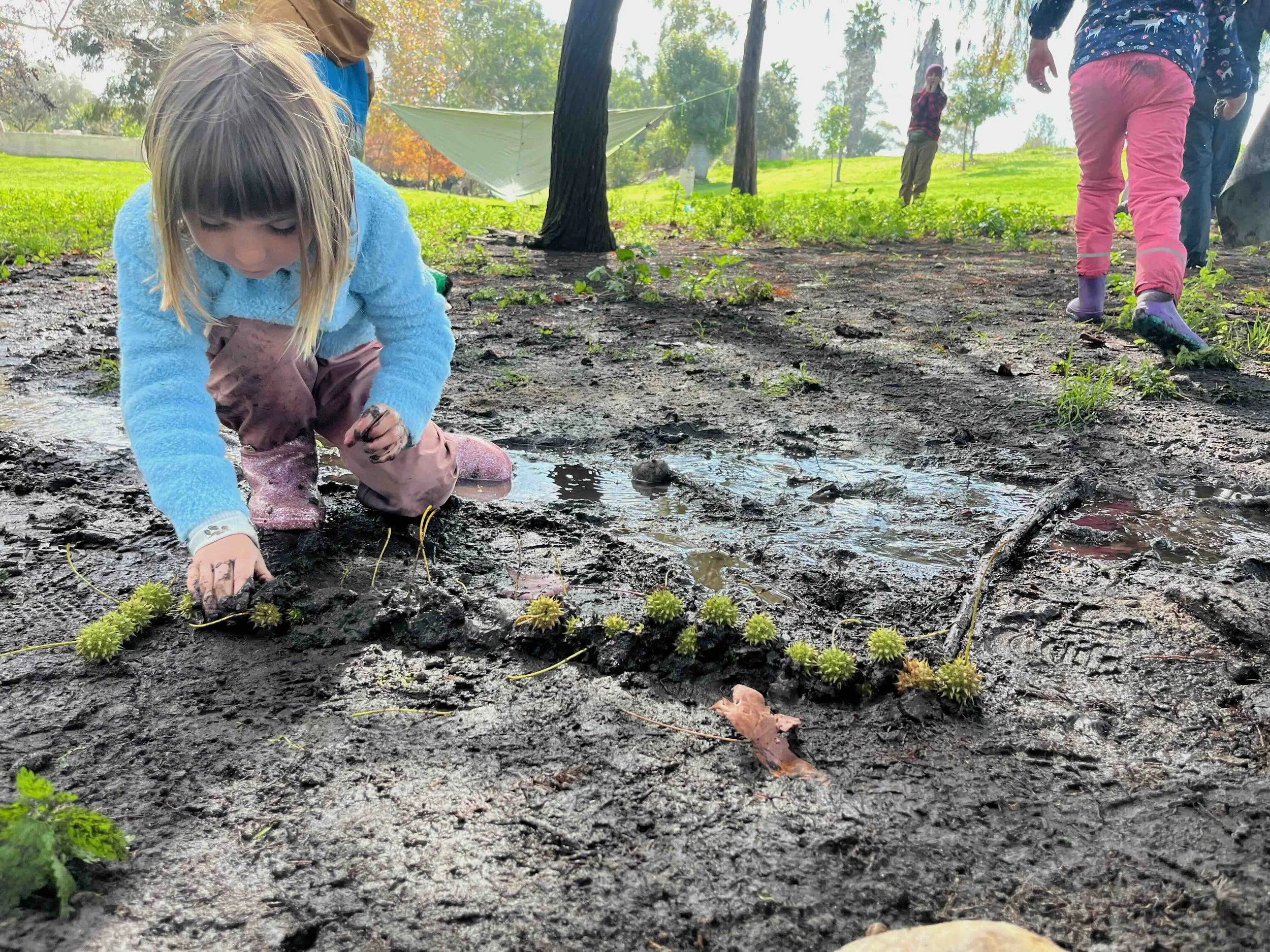The Real Work of Building a Fairy House
Here at All Friends, we know the power of hands-on learning, especially when it's rooted in the magic of the natural world. And what's more magical than building a tiny home for a fairy?
While a fairy house might seem like a silly aside to learning, we as teachers get to see firsthand the incredible array of skills that children develop as they gather the materials, design structures, and bring their visions to life. It's not just about making a decoration; it's about fostering critical thinking, creativity, and a connection to nature.
So, what exactly are our students learning as they embark on the enchanting journey of building a fairy house? Let's take a closer look:
1. Problem-Solving & Engineering (Tiny Scale!)
Think about it: how do you get a moss roof to stay on a twig frame? How do you create a sturdy wall from bark? Fairy house architects are constantly faced with engineering challenges. They learn to:
Identify suitable materials: Which sticks are strong enough? Which leaves are best for shingles?
Experiment with construction techniques: Will this mud act as good mortar? How can I weave these grasses together?
Adapt to unexpected challenges: Oh no, that branch broke! What's my backup plan?
Understand basic physics: How does gravity affect my roof? How can I create a stable foundation?
2. Observation & Natural Material Sourcing
Before any building can begin, there's a vital step: collecting materials! This process sharpens observation skills as children learn to:
Identify different natural elements: Recognizing various types of leaves, bark, twigs, stones, and seeds.
Understand the properties of materials: Is this bark flexible? Is this stone smooth or rough?
Source sustainably: Learning to take only what's needed and to respect the natural environment. They discover where to find the best "furniture" for their tiny residents, from acorn caps for bowls to delicate petals for rugs.
3. Creativity & Design Thinking
Fairy houses are miniature canvases for imagination. Students are encouraged to:
Visualize and plan: What kind of fairy lives here? What would they need?
Develop unique designs: No two fairy houses are ever exactly alike, reflecting each child's individual creativity.
Embrace artistic expression: Arranging elements aesthetically, choosing colors from nature, and adding whimsical details.
4. Fine Motor Skills & Dexterity
Working with small, natural materials requires precision and control. Children enhance their:
Pinching and grasping: Picking up tiny pebbles and delicate petals.
Weaving and tying: Manipulating flexible materials to create structures.
Hand-eye coordination: Carefully placing elements to achieve their desired effect.
5. Patience & Perseverance
Building anything, even a tiny fairy house, takes time and effort. Students learn the value of:
Sticking with a project: Even when it's challenging or doesn't go as planned.
Breaking down tasks: Tackling the project step by step.
Delayed gratification: Understanding that the beautiful end result requires sustained effort.
6. Respect for Nature & Environmental Stewardship
Perhaps most importantly, building a fairy house fosters a profound connection to the natural world. Children learn:
Appreciation for natural beauty: Seeing the intricate details and varied textures of their environment.
The interconnectedness of ecosystems: Understanding where their materials come from and how they fit into the larger natural world.
The importance of leaving no trace: Respecting the land where they build and ensuring their structures are made of biodegradable materials.
So, the next time you see a tiny home nestled among the trees, remember that it's more than just charming decor. It's a testament to the myriad skills, both tangible and intangible, that our young naturalists are developing, one twig and one leaf at a time.


